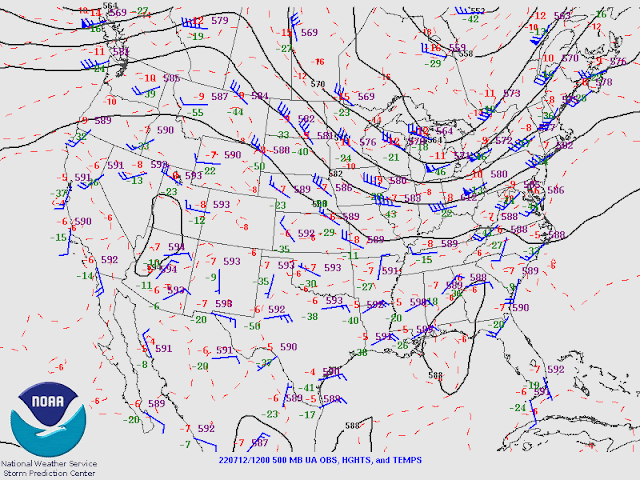Previous Forecast
Shower and thunderstorm activity increased for much of the state yesterday. A few showers developed around the Phoenix and Tucson areas and took the edge of the heat, at least temporarily.
The WRF forecasts were quite good, including some runs developing the Tucson and Phoenix showers. The HRRR, with its new configuration, appeared to be the most accurate. The QPF was the highest and subjectively, very similar to the NSSL Q3 QPE. Both the PBL and MP schemes were changed. I can't change the PBL for the rest of the runs, as the Power Forecast Group's wind to power conversion is trained on the MYNN scheme. However, I can (probably) change the MP scheme and I will do some additional testing on the GFS to see if it will be OK to run.

Discussion
A massive MCS rampaged over much of Sonora overnight, and thunderstorms continue along the Sonora/Sinaloa border. A large MCV and associated debris clouds are located just south of Hermosillo. The image is from around 5Z.
I thought we'd see an outflow-induced surge this morning, but as of now, nothing has appeared at Yuma. However, PW is slowly increasing as Puerto Penasco and Organ Pipe are now at 37-40mm. Tucson has also increased to 36mm. Despite the moisture increase, the Tucson upper-air data still has a limited CAPE of only about 200J/kg. Same with Phoenix. The vertical wind profile is excellent for steering storms into the lower elevations. Hopefully, a surge will kick in and increase CAPE and low-level winds. Otherwise, it will be like yesterday, with storms dying out as they move into lower elevations.
Initializations
As mentioned, it's a challenging situation with various issues with the initializations. The 6Z and 12Z HRRR didn't have enough clouds, while the 12Z RR had way too many clouds and shower activity over Arizona. The 6Z GFS and 9Z RR were better. The MCV was initialized somewhat too far south by all the initializations, except for the 6Z HRRR, which was mostly missing this feature. The 6Z GFS or 9Z RR seems to be the best, but all initializations have issues so forecast confidence is low.
Day 1
It looks like it's just a matter of time before the outflow-induced surge moves into Arizona. By mid-day, all runs have a strong Gulf Surge underway, resulting in increasing moisture. The issue with a day 1 surge is that the lower troposphere is usually cooled significantly, resulting in a cap.
The Gulf Surge is relatively deep, as it's also seen at 850mb, along with the highest dewpoint temperatures so far this season. New Mexico and far eastern Arizona are seeing drying due to subsidence. As sometimes happens, the pseudo backdoor dryline can act as an initiation point for storms later in the day.
The 6Z GFS seems to have a good middle-of-the-road CAPE forecast. It's still not great, but an improvement compared to yesterday as there is CAPE for both Phoenix and Tucson.
As expected, there are significant differences between runs about convective initiation times and locations. The general message is storms develop over the higher terrain of northern, eastern, and southeastern Arizona during the afternoon hours.
It looks good for Tucson as a moderate amount of CAPE is present, an excellent vertical wind profile, and a deeply mixed PBL.
The general message for Tucson is that storms are scattered about during the late afternoon hours.
Phoenix looks pretty good too. CAPE is around 800 J/kg, the wind profile is very good with shear and steering, and despite a surge, the PBL is mixed deeply with only a minimal inversion at the top of the mixed layer. In addition, there is a significant inverted V profile indicating a threat of strong/severe winds. All that is needed is a strong outflow boundary or OFB intersections.
Some runs do bring outflow boundaries into Phoenix by later afternoon or early evening.
A couple of runs manage to develop storms in and near Phoenix, but the majority do not. It's hard to say what will happen in Phoenix, but I'm leaning towards the more active forecasts.
The 15Z HRRR has a few storms around 4Z.
Day 2
This is no good!!! Despite the surge continuing, the dry air wins out, at least for eastern Arizona.
Phoenix sits on the other side of the dryline and has a good wind profile and decent CAPE. However, without any upstream storms to either move in or provide outflow boundaries, it looks like it will be hard to get any deep convection going.
A few runs develop storms to the south, so there is at least a chance that Phoenix could see a little activity.


















No comments:
Post a Comment
Note: Only a member of this blog may post a comment.